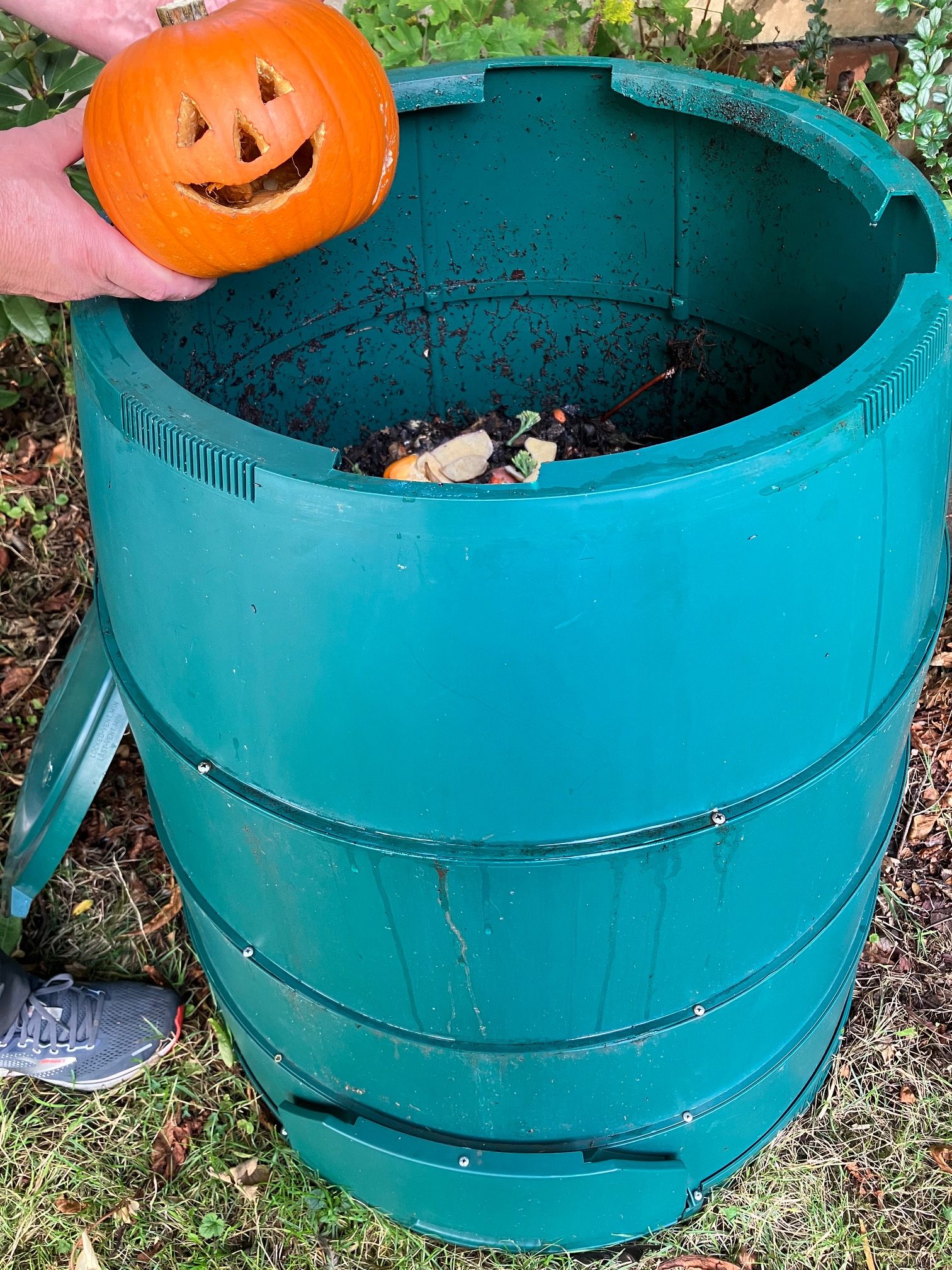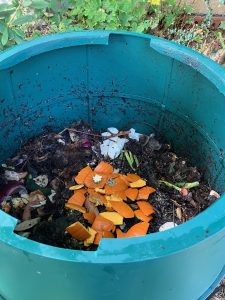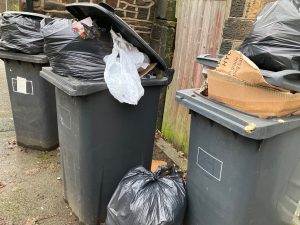Remember, remember, come the month of November,
Halloween brought fun and mirth,
But don’t let that pumpkin
Rot in a wastebin
When it could nourish the earth.
Don’t let your pumpkin lantern be one of those that contribute to greenhouse gases – compost it and feed the earth instead.
Along with all the tricks and treats, every year Halloween brings horror stories about how many pumpkins will end up in landfill or incineration. Around 15 -20 million apparently. Most of them haven’t been used as food first either. But it doesn’t have to be that way.
You could make an occasion of pumpkin disposal and go along to a Pumpkin Smash. These are organised events where people are invited to take their used pumpkin lanterns to be smashed up in a variety of fun ways and then composted, putting nutrients back into the soil.
Check to see if there’s a Pumpkin Smash taking place near you. If you live in Leicester you no doubt know about the popular Pumpkin Smash at the Stokes Wood Allotments site. These events are usually followed by a practical session on composting pumpkins and food waste in general. People are encouraged to also collect pumpkins from friends, schools or pubs to help reduce waste. The more the merrier – let’s smash a hole in that 20 million statistic!
Let’s hope this great idea catches on and we see more Pumpkin Smashes all over the country next year.
A Pumpkin Smash is great way to teach kids about composting and wean them off the idea that wastebins are for everything.
If you use battery-powered tealights inside a lantern, the insides will be kept fresh enough to eat later.
Don’t bin that pumpkin –
It’s better to get a Johanna!
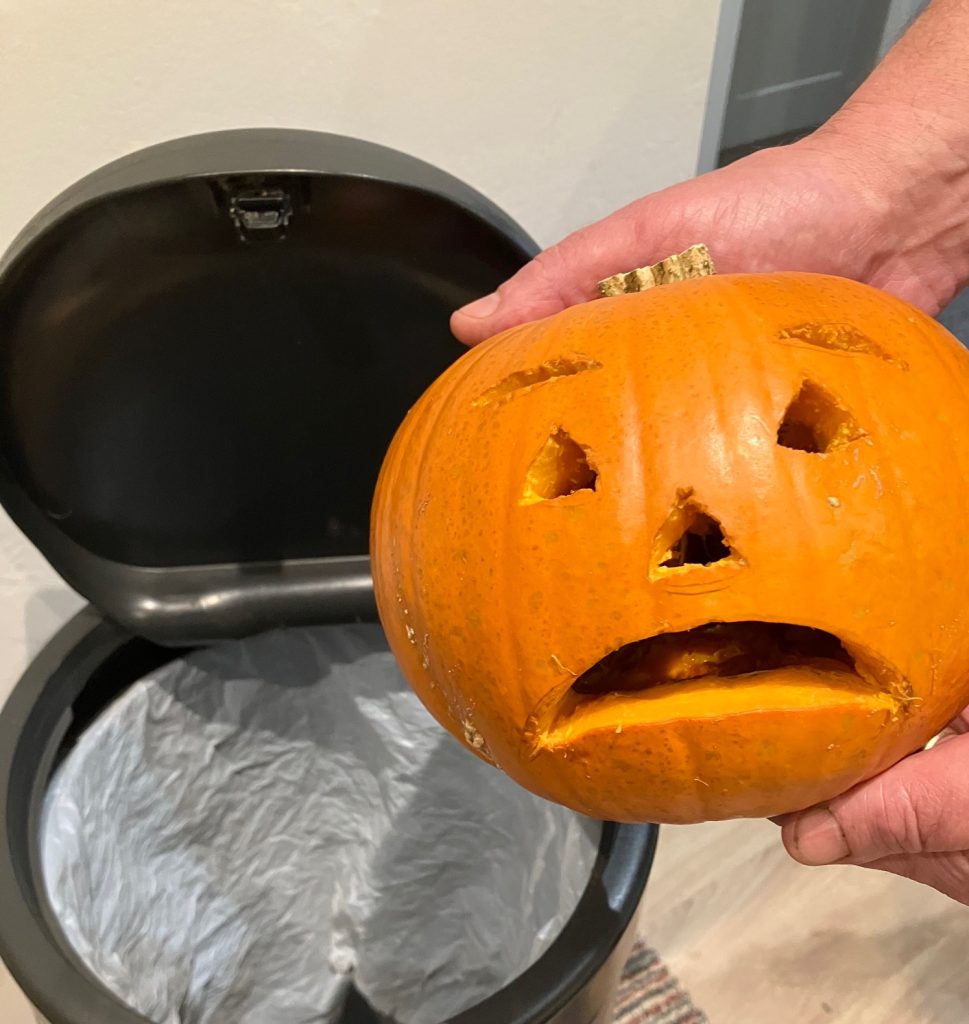
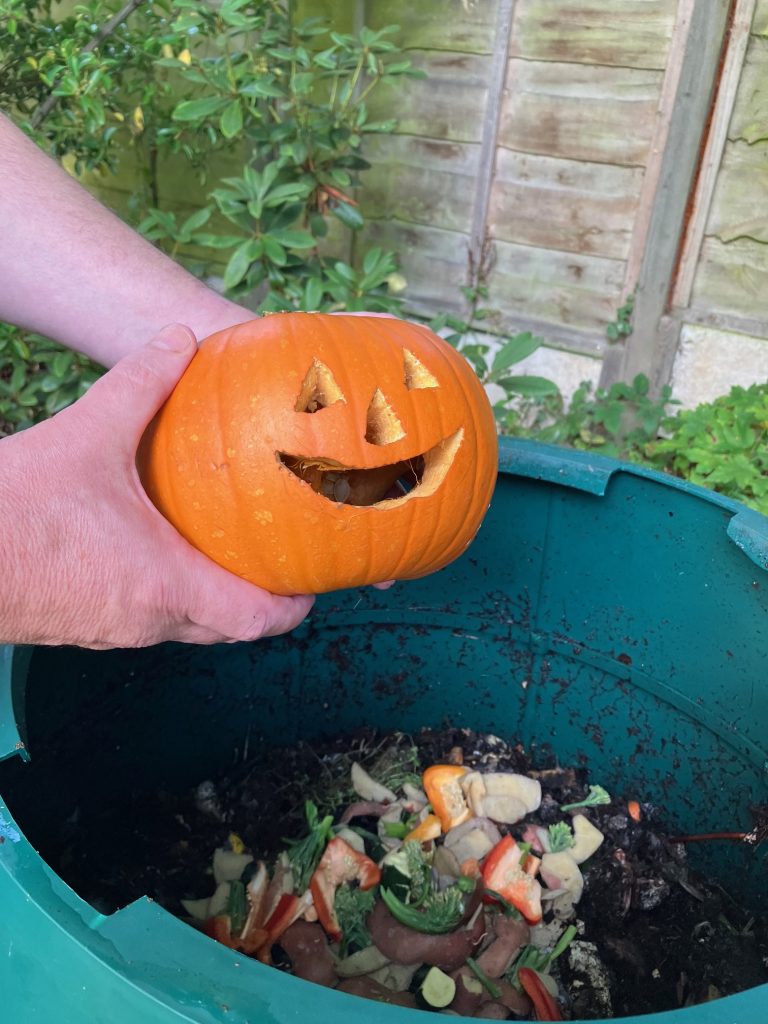
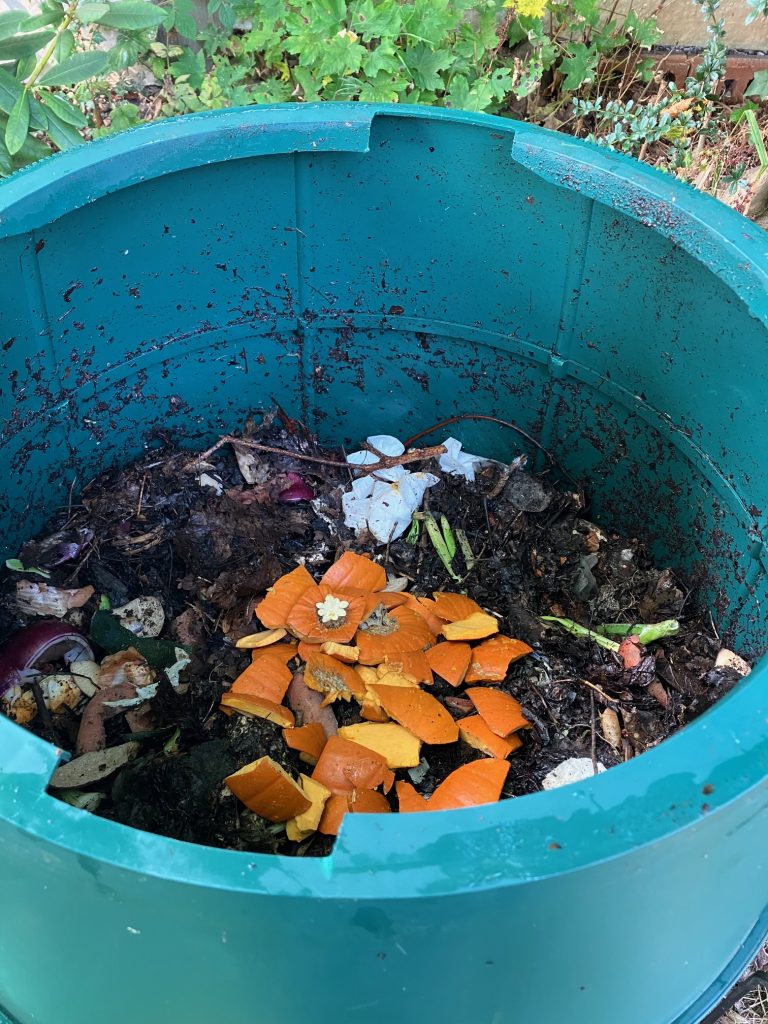
A happy Halloween ending
To compost your used pumpkin, cut the skin into pieces (the cutters in Halloween lantern carving sets can be useful for this job) or use a spade to chop it up.
Get children involved by letting them add the pieces of pumpkin to a composter and stir in well together with woody garden waste, autumn leaves or scrunched paper and torn cardboard.
If you’d rather eat your pumpkin – yes, the whole pumpkin – this recipe’s for you.
We got it from Chef Dan at Kitche, the food waste fighting app. We tried and tested it and found it totally delicious.
ZERO WASTE PUMPKIN SOUP
Serves – 4
Time – 1 hr 30 mins
Ingredients
1 medium large pumpkin
3 large onions
3-4 garlic cloves,
Olive oil
1 litre vegetable stock
1 can coconut milk (optional)
Sprig of rosemary
2 bay leaves
Salt and pepper
Method
1. Wash, cut in half and gut your pumpkin, making sure to separate the flesh and seeds.
2. Crush garlic and finely chop the onions and add them to the pan, add oil and simmer until slightly golden.
3. Chop remaining pumpkin into large cubes and add them to a large pan with the pulp.
4. Finely chop your rosemary and add to the pan with your bay leaves, which you can leave whole.
5. Add your veg stock, making sure the ingredients are covered.
6. Add coconut milk if using.
7. Put on lid and let the pan come to the boil. Once bubbling, turn the heat down so the soup is simmering. Sort out the seeds while waiting.
8. The soup will take at least an hour to cook. Make sure the pumpkin skin is soft (this can take a little longer depending on the type of pumpkin).
9. Once it is ready, remember to take out the bay leaves and add salt and pepper to taste. Use a hand blender to make the soup smooth and creamy. Add water if required until it is your desired consistency. Can be stored in the fridge or freezer.
What to do with your pumpkin seeds?
The seeds make a great garnish. Lay them out on a baking tray and lightly salt them. They only take 5 – 10 minutes and burn easily. If you don’t want the seeds on soup, save them till spring and plant them in your garden.
***
We also like this idea for pumpkin seeds from the organic online store Abel and Cole:
Give seeds a rinse, then toss in a little olive oil, salt and paprika and fry them for 5 minutes until golden brown – a great snack to serve at Halloween parties.


